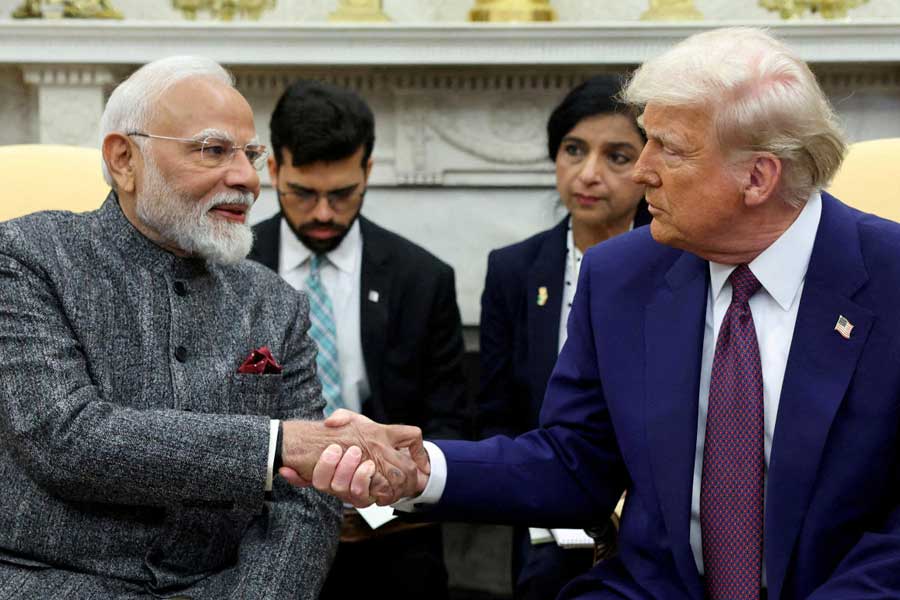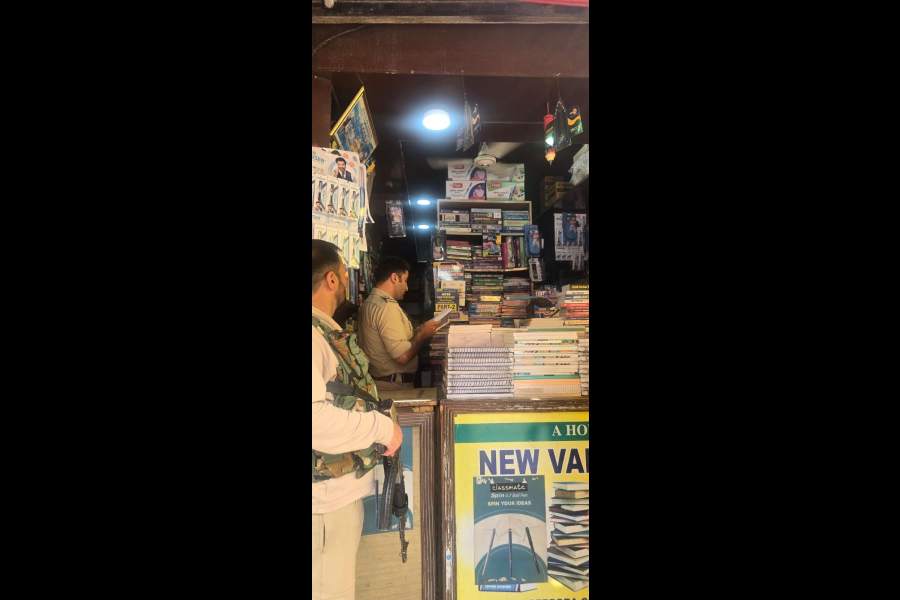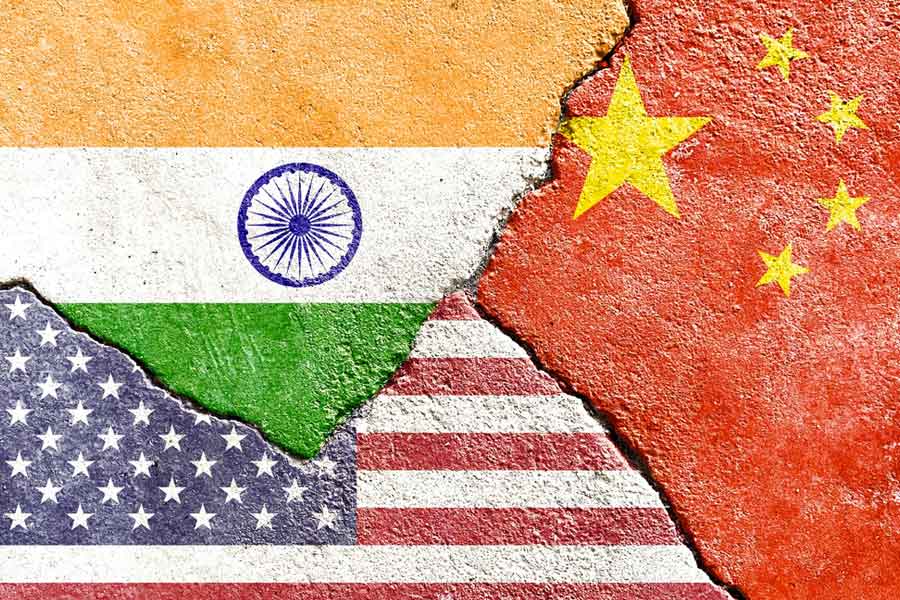 |
| ‘Gandhi commented that the practice of spinning and weaving by Assamese women would not only boost the economy of the country but also their patriotism.’ Picture by S.H. Patgiri |
It is evident from a good number of sources that during the epoch-making period of the nation’s freedom struggle, the women of Assam came out to shoulder the responsibility and fought valiantly for the liberation of the country. The number of women actively drawn out of their homes into the freedom movement against the British rule might be negligible. But their involvement was very significant in shaping the future of womanhood.
There is no doubt that Mahatma Gandhi’s National Movement of 1921 for the first time drew Assamese women to the mainstream of Indian life. It is also true that the non-violent character of freedom struggle appealed to the innate nature of women and they willingly responded to the clarion call of the movement. Mahatma Gandhi arrived in Guwahati on January 18, 1921, on the invitation of Tarun Ram Phookan and Nabin Chandra Bordoloi, the two eminent leaders of the Non-Co-operation Movement. Gandhi’s visit to Assam brought tremendous success to the movement and it gave an impetus to the Congress volunteers. The political awakening had gradually infiltrated into all the communities of the state.
Many women came out; they expressed their willingness and exerted their influence in different groups. They began organising women and by supporting the Non- Co-operation Movement, they advised the people to respond to it. Meetings were held in numerous places where women workers explained the significance of non-co-operation to the people who did not even know the meaning of “Swaraj”.
Gandhi visited Tezpur on August 21, 1921 and addressed a huge gathering at Polo Field, where he paid rich compliments to the Assamese women for their accomplishment in weaving. In Nawajibon, a Gujarati journal, he wrote: “If Assamese women respond enthusiastically, then of course there would be a big help to the National Movement.” He commented that the practice of spinning and weaving of Assamese women would not only boost the economy of the country but also their patriotism. The following day, a special meeting for women was organised at the Bengali Theatre Hall. The women who were not supposed to appear in the street during the day also came out in hundreds to listen to Gandhi.
By that time the Non-Co-operation Movement had spread to Tezpur, Sootea and in other places of Sonitpur district under the leadership of Omeo Kumar Das and Chandra Nath Sarma. Women of well-to-do families distributed khadi clothes among the poor people and fed the volunteers.
With the progress of the movement, the Congress volunteers began visiting the tea garden areas to propagate the boycott of foreign goods and liquor. Some of the tea garden labourers boldly helped the volunteers. Mungri or Malati Mem, a woman labourer of Lalmati tea garden of Tezpur also helped the volunteers carry out the prohibition work among the garden people. But finally she was killed in a police encounter. Mungri or Malati Mem is said to be the first woman martyr of Assam in the freedom struggle of India.
Janaki Devi, a prominent woman worker of Majgaon (Mauthan), Tezpur, was arrested in 1921 and imprisoned. Two other active workers of the Non-Co-operation Movement were Jagati Devi and Asraddha Devi of Lakhrai, Tezpur.
The new phase of Indian national struggle was inaugurated in 1930 with the commencement of Gandhi’s heroic march to Dandi in March that year. Women also responded to the call of Gandhi. Even after the imposition of the notorious Cunningham Circular to debar the school students from joining the agitation, it gained momentum. The picketing in the educational institution was taken as a major measure of protest against it. The woman came out to make picketing successful. The heroism shown by the rural women was of a great inspiration for the other people. After the 1930s movement, the leaders devoted themselves to re-organise the Congress. In Darrang district, young men and women held a conference at Naduar on April 19 and 20, 1931. Commenting on the number of women present in the conference, the chief secretary of Assam agreed in his confidential report that “a few years ago it would have been considered incredible that 500 Assamese ladies should have met in a conference with men and should have passed a resolution applauding the patriotism of Bhagat Singh”.
Picketing in the educational institution, boycott of English goods and Swadeshi programme achieved notable success in Sonitpur district also. To keep alive the spirit of movement — processions, demonstrations and prabhat pheris were conducted very frequently. Women from villages came out to the streets, sang patriotic songs and hoisted the Tricolour. Kanchan Prova Devi Goswami, Sarala Das, Kironbala Barkakaty were the prominent workers of those programmes. Phuleswari Hazarika, Ghameswari Nath, Rongdoi Nath, Bhadreswari Boro, Samuki Boro, Sankhini Boro, Sabitri Devi, Basanti Devi, Jetuki Devi, Jogeswari Devi were the active workers of Sonitpur during the Civil Disobedience Movement of 1931-32.
Mahatma Gandhi again visited Assam in 1934 in connection with a programme of Harijan Sewak Sangha. Chandrabala Barua, a leading social worker of Tezpur, donated Rs 100 to the Harijan Sewak fund.
Thousands of women participated in the freedom struggle, courted arrest, faced lathi charge, fell to bullets and also went underground.
As a part of the freedom movement, Pushpalata Das offered individual Satyagraha at Hamdoi on February 20, at Kamarpara on February 21, at Boko on February 22 and at Guwahati on February 23 in 1941. Many women distinguished themselves in various roles during the Quit India Movement. On September 20, 1942, Kanaklata Barua, a girl in her teens, marched to Gahpur thana as the leader of 500 people to hoist the Tricolour at the thana building. She was killed in police firing.
Bakuli Bora of Sootea was one of the prominent leaders of the Mahila Sena Bahini of 1942. Purnada Devi and Padumilata Gogoi of Sootea, left their jobs and joined the movement. They were sentenced to four months of rigorous imprisonment.
Noted freedom fighter Pushpalata Das was arrested, tried and detained as a security prisoner. She was also externed from Tezpur and was interned in the Guwahati Municipal area by the deputy commissioner of Kamrup. She violated the internment order and as a result had to suffer six months of rigorous imprisonment. But she was finally released after the Gandhi-Irwin agreement.
The active involvement of the women in the country’s freedom struggle sowed the seeds of their own emancipation and awareness of their rights.










